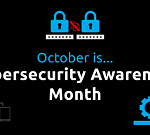
This recently established security category includes solutions that bring together various DR tools to streamline the process and allow for more efficient detection and response, according to the Security Intelligence article “What Is Extended Detection and Response (XDR)?”
At a time when ransomware is running rampant and hackers continue to develop increasingly sophisticated malware variants, it’s vital to invest in offerings like XDR that allow your organization to detect, contain and eliminate advanced threats ASAP. If you’re curious about how this type of cybersecurity solution works and the advantages of deploying XDR for your business, here are the answers to some questions you might have and reasons to consider implementing extended detection and response.
What is extended detection and response?
Extended detection and response solutions “automatically collect and correlate data from multiple security products to improve threat detection and provide an incident response capability,” states the article “Gartner Top 9 Security and Risk Trends for 2020.”
This kind of IT security offering can significantly bolster a security team’s capabilities by taking in data from a wide range of sources, including cloud solutions, servers and email along with networks and endpoints, according to Cisco.
By combining detection and response solutions (i.e., SIEM, NDR and EDR) and leveraging open-system integration, XDR enables greater visibility across your company’s environment (including networks and endpoints), Security Intelligence explains. Extended detection and response platforms can leverage automation, artificial intelligence and advanced analytics to help minimize the time it takes to detect and remediate threats.
The difference between XDR and EDR
XDR goes beyond what an EDR solution can do by including a greater range of deployed security solutions, Cisco explains. EDR only offers insight into activity across various endpoints, while XDR has a much larger scope including not only endpoint security but also networks, servers, SIEM and beyond, according to the Forbes article “EDR, XDR And MDR: Understanding The Differences Behind The Acronyms.”
XDR vs. NDR
As for NDR, these types of security solutions focus on identifying and responding to threats within a network, according to VMware. Again, XDR solutions offer more expansive detection and response capabilities and allow for data collection and threat hunting across various security layers, including networks, cloud, email and more.
The benefits of XDR for businesses
Deploying an XDR solution can prove advantageous for security teams in many ways. According to VMware, Palo Alto, and Cisco, here are just a few of the most notable benefits of extended detection and response.
- Improved visibility into your IT environment
- Quicker detection and response driven by automation
- Greater efficiency due to having a single platform that provides a comprehensive view of your environment instead of relying on multiple siloed security solutions
- Additional context for sophisticated threats
Our partner network includes leading cybersecurity solution suppliers that offer XDR platforms. If you’d like to learn more about XDR capabilities and your company’s options, our trusted advisors would be happy to assist you. Start shopping for advanced threat-hunting solutions by calling 877-599-3999 or emailing sales@stratospherenetworks.com.


